|
The Old, Old Flowers.
|
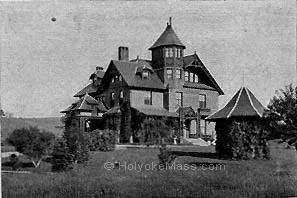
Residence of Timothy Merrick.
|
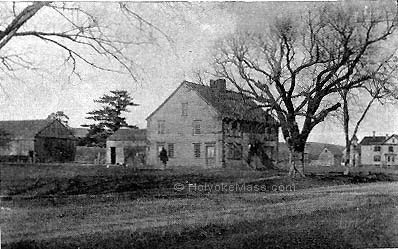
The Old Brown Place.
|
The author of "Endymion" put as much truth as poetry into his line when he wrote, "A thing of beauty is a joy forever." The dandelion is none the less beautiful because we have always seen it and it is too common to be noticed. A gentleman presented a bouquet to a lady, in which was one flower that struck her as so exquisite that she exhausted all her superlatives in its praise.
"Do tell me the name of it," she said.
"It is a potato blossom," replied the donor.
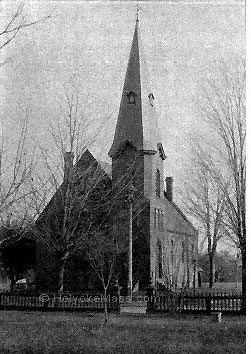
The First Baptist Church.
|
Real beauty is above the laws of fashion, and outlives fashion; so that if it becomes "unfashionable" by a whim of human taste or fancy, it can afford to wait till its turn comes again. A flower (of whatever kind) is a piece of perfection, and nature never changes its pattern for the fickle favor of men and women.
The revived popularity of the old-time flowers is a curious illustration of both the changeableness of taste, and the permanence of beauty. On many sides we see evidences that the old-fashioned flowers are coming back into fresh favor. There is a decided tendency to again use in gardens the flowers of our great-grandmothers’ gardens, such as the peonies, poppies, hollyhocks, sweet william, clove pinks, yellow lilies, columbines, bluebells, fleur-de-lis, monkshood, phloxes, lychnis, sweet sultan, and the like. They are not only for the most part beautiful in color and form, but a great advantage of their cultivation is that when once planted they will delight the senses for years, if a little attention is only given to them in the spring by digging about the roots and applying a plentiful supply of rich compost, and dividing the roots in autumn if too crowded.
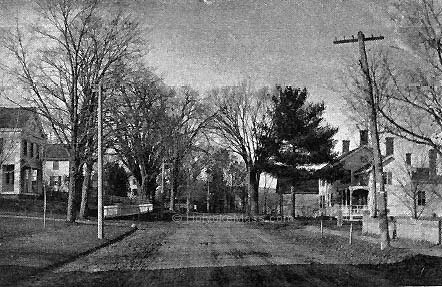
Northampton Street.
|
To make an old-fashioned garden there should be beds of Easter lilies, mingled with clumps of spider lilies and borders of sweet williams and columbines of every hue, intermixed with circles of annuals as mignonette and sweet slyssum, edged with bluebells or baby’s-breath. Long beds are made of tulips of all colors, single and double, and clumps of peonies, phloxes, clove pinks, poppies and garden pinks, with a background of hollyhocks and monkshood. The martagon lilies, Easter lilies, yellow lilies, and the iris with its pure crimson bells, may succeed the tulips, and then the June roses, which in these days of rose gardens would not be thought very beautiful, but in the old days were a glory. In the finest of these old gardens you might have found as many as fifty kinds of roses planted there, besides climbers and bush roses, and various kinds of monthly tea and a blanksia, whose clusters of buff flowers were exquisitely beautiful. Of course, these delicate roses were housed in the cellar during the winter, but they added great beauty to the old garden i the summer. Campanulas, foxgloves, pyrethrums, and larkspurs also grew in abundance, and cut flowers always filled dishes in the sitting-room and parlor. The blood-red, dark-crimson and dwarf golden-yellow sorts are very effective in mixed borders. Sweet williams have been greatly improved and produce flowers of large size and great richness of coloring.
|
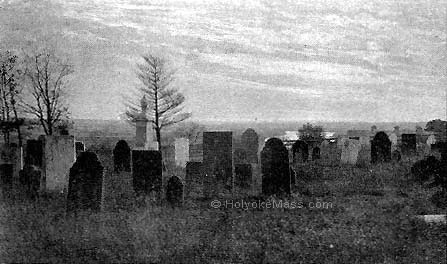
The Old Cemetery — Elmwood.
|
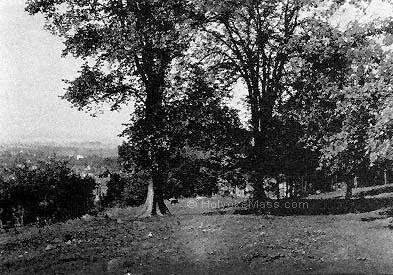
View from Westover.
|
© Laurel O’Donnell 1996 - 2006, all rights reserved
This document may be downloaded for personal non-commercial use only
and may not be reproduced or distributed without permission in any format.
This is an edited adaptation from the original publication.
|
|
|